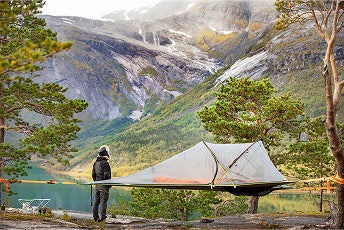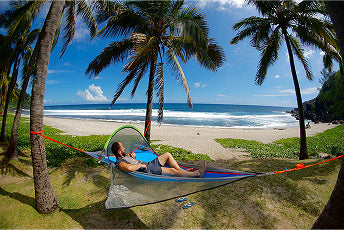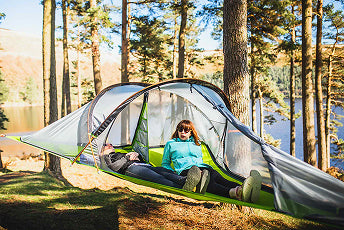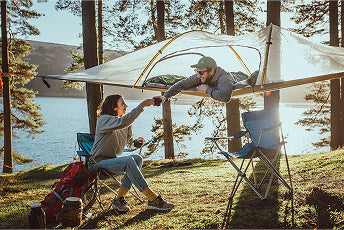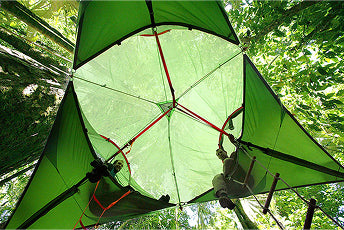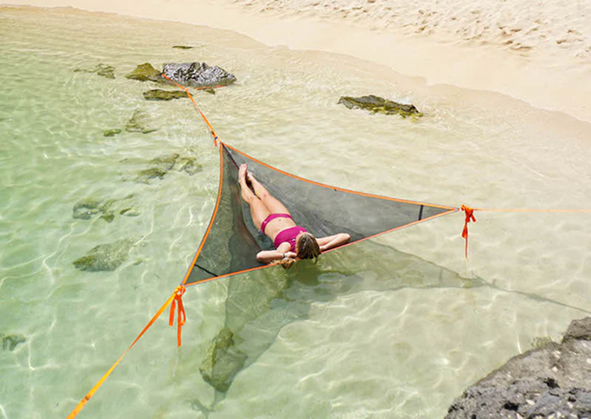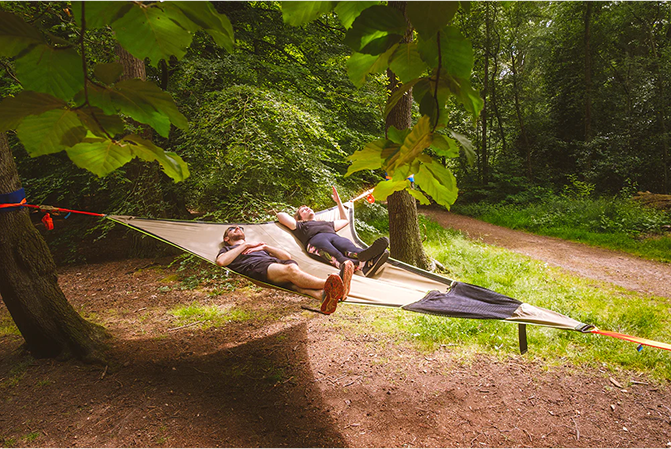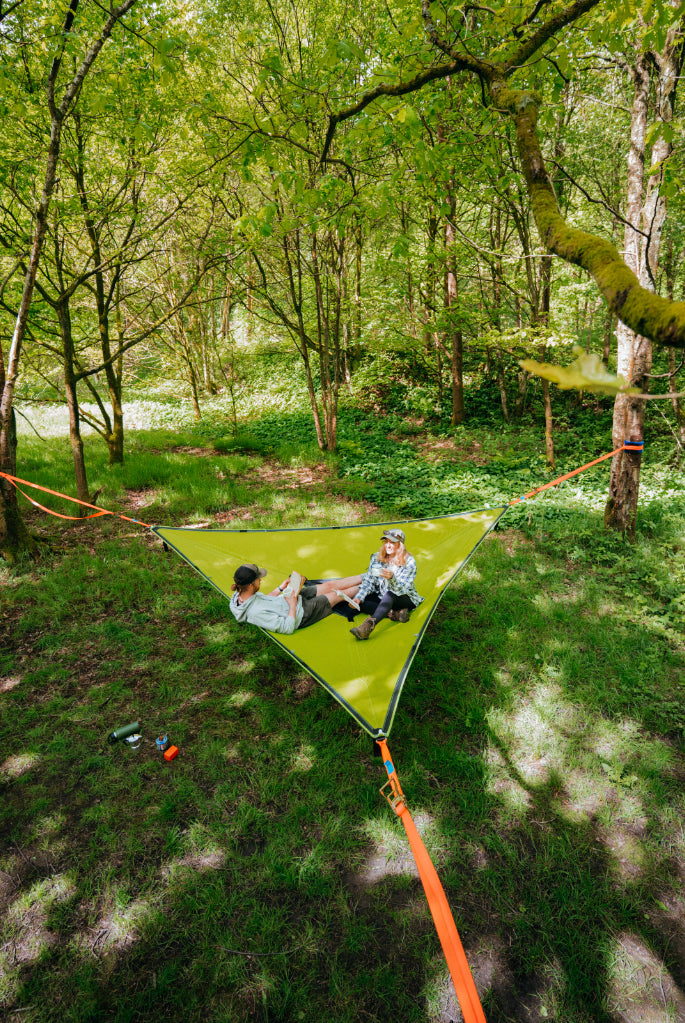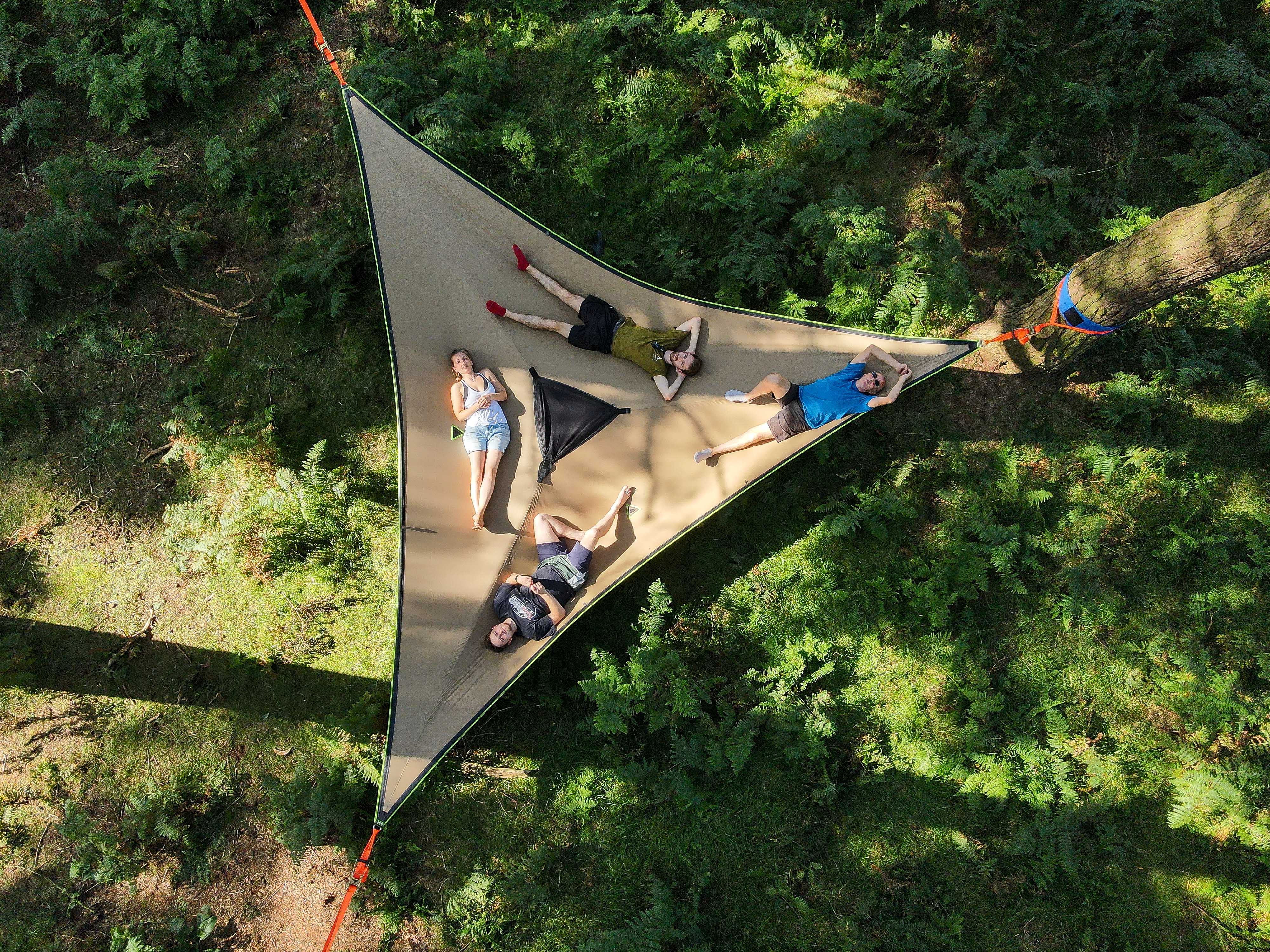Do you ever just want to escape to the Woods and not come back for a little while? We do. It’s a great idea to have a Go Bag prepped and ready so you can leave in an instant should you need. In an increasingly unstable climate – both environmental, and political – many folk are planning ahead to make sure they’re equipped for a quick escape to the Wild, whatever the world throws at them.
What is a Go Bag?
Any emergency Go Bag, or a ‘Bug Out Bag’ is a portable kit that contains all of the items you need to survive while you are away from home for a period of time. Whether it’s an earthquake, a wildfire, or you just need to get away from densely populated areas fast – it’s worth packing it in advance, in the hope you’ll never need to use it. If ever the situation arose, it can give you real peace of mind knowing that you are as ready as you can be. Each pack should contain some core items which we’ll go into below.
Your Go Bag should be sturdy and easy to carry – a Backpack is ideal as you can carry it over longer distances if on foot. Keep your packing list to the essentials, so that you have all your basic needs covered. We asked the Tentsile Team (all hardened Outdoors lovers!) what their key items would be to survive for a period of time in the Wild. Here are our top picks.
Shelter
Of course, we would recommend a Tentsile Tree Tent. They’re versatile for use in all terrains – you don’t need flat ground, you can set up over water (think floods / natural disasters), and you don’t even need Trees – funnily enough. In a real stitch you can actually pitch them on the ground for a night.*
The most important thing is that you have some protection from the elements, so you can rest and keep your energy up without being exposed to extreme weather. Our top picks would be the UNA 1 person Tree Tent, or the Stingray 3 person – depending on the size of your family unit and whether you are on foot or in a vehicle.
The UNA is lightweight and packs down small enough to stuff in the Go Bag. It has plenty of room for the solo camper, and underfloor storage to keep your emergency pack off the ground too. It is fully waterproof too, of course (you’d be amazed how many people ask that!).
The Stingray is bigger and heavier, granted – but perfect for longer stints in the wild and is a multi-person shelter with LOTS of room. If you have company, you can also split up the components of the Stingray – one person carrying the tent, another carrying the ratchets. Our young family of 4 leaves one in the trunk of our 4 x 4 at all times, so it’s ready to go with a moment’s notice.
For additional insulation and comfort, and to keep the cold air (or ground) off your back, an air-mattress or Insulated quilt is well worth it for the weight / space it takes up. Ours are custom designed to fit into each Tree Tent we sell and rated at 2.7 – 4.2 R value depending on whether you go for a Quilt or a Sky-pad mattress.
* If it’s likely you’ll be in an area that really doesn’t have trees anywhere nearby, and will be using your Tentsile on the ground frequently, you’ll also want to pack a Ground Conversion Kit.
Water
Two options for you here, and we’d suggest both of them in tandem. Hydration is the most important thing to consider – you can survive for up to 3 weeks without food, but only 3 days without water.
- Bottled Water: Good to have on hand in case you can’t find a safe water source, but heavy to carry – so don’t rely on this as your only source. Use a lightweight but durable, refillable canteen.
- Lifestraw – These utterly ingenious, lab tested water purification and filter systems are relatively inexpensive and can quite literally save your life. They’re super easy to use – simply collect water and drink directly through the Lifestraw to remove the most dangerous contaminants; bacteria & parasites, PFAS (forever chemicals), microplastics, chemical and pesticides. What’s even better for each one purchased, Lifestraw donate clean water for one year for a child in need.
Food
Non-perishable items are a core item on the list. These include canned goods, dried foods including fruit, nuts and high protein legumes, rice, and even freeze-dried meals like these from Mountain House, as well as energy bars for a sugar boost.
Cook stove & pot – you’ll need something to warm your food and heat water for hot drinks. This small and portable version from Biolite doubles as a back-up charger.
Fire
When you’re in survival mode, everyone knows that one thing you need is a fire. It’ll keep you warm and dry, ward off predators, and let you cook and boil water. A Ferro Rod or Firesteel is your best friend out in the bush. Also take a small waterproof sealed bag of bushcraft tinder or cotton wool to help those first sparks take, and you should pack a couple of lighters in different places – bag, pockets etc so that if one of your tools get wet you have back up. You really, really don’t want to find yourself without a means to create a fire.
First Aid Kit
Hopefully you won’t need it, but just in case a good First Aid Kit is crucial. Even a small cut or graze can quickly turn into something far worse if it’s not treated quickly. As a minimum your Kit must include:
- Wound dressings such as band-aids, sterile gauze, wound closure strips / sutures (aka butterfly stitches)
- Bandages
- Cleansing Wipes
- Antiseptic Spray and Lotion
- Safety pins
- Small scissors
- Sterile Saline solution
- Eye dressing
- Disposable gloves
- Aluminium blanket – to help retain body heat and protect from hypothermia.
Hatchet or Knife (or both)
For chopping wood, to hacking through thick foliage, to shaving tinder, both of these blades have their benefits – they are the basic tools you need to get your basecamp set up.
Flashlight – either a basic wind-up version, or a rechargeable lantern like this one from Goal Zero. ‘But how will I charge it in the event that all the power it out?’ – we hear you ask. Well…
Goal Zero Solar Charger – an awesome piece of kit that will let you use the sun on the run, powering up your devices over and over whilst weighing in at only 360g. We’ve tried and tested these out in the Wild, and they really are every bit as powerful as they sound.
Whistle – to attract attention if you need rescuing
Clothing
- Take one change of clothes so if what you’re in gets wet, you have time to air dry and keep swapping out. Damp clothes + long distances = blisters and chafe – which though they sound mild can become extremely uncomfortable very quickly.
- Pack a thermal layer for both top and bottom, for nighttime temperature drops.
- Ultra lightweight rain jacket – for when that downpour strikes.
Rope / Twine
An all-round useful item for trapping to tying – you never know when a bit of rope will come in handy.
Compass or GPS
Assuming you don’t want to disappear into the Wilderness for the rest of time, this is a handy item to help you from getting totally lost.
Other notable (but non-essential) items:
Insect Repellent
Toothbrush
Sanitary items
Cash in small bills / change – ATMs are unlikely to be working and who knows when you may need to pay someone for a little help!
Some entirely superfluous items that may just cheer you up (morale is important too, you know)
- Coffee
- Ukulele or Harmonica
- Inflatable Pillow
- A small bottle of Whisky
- Pack of cards
So there you have it – our ultimate Bug Out Bag packing list. We hope you found that a helpful run down, and that you’ll consider getting your pack ready to go, just in case. Better safe than sorry in our view, and as our wise young friends the Boy Scouts say – ‘Be Prepared’. See you in the Wilderness – we’ll make you a cuppa on our Cookstove ;)

